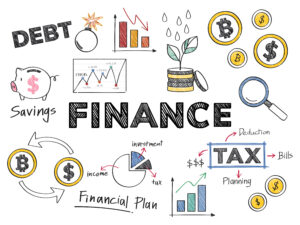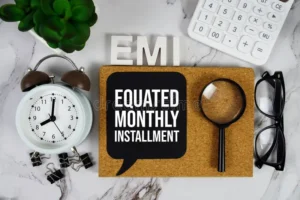Skill Flipping: Turning Simple Knowledge Into Mini Income Streams
Small Skills, Big Income Potential
In today’s digital world, you don’t need a degree or a massive following to make money. What you do need is creativity — and that’s where skill flipping comes in.
Skill flipping is the art of taking tiny skills you already know — like Canva design, Excel tricks, resume writing, or photo editing — and turning them into small, repeatable income streams.
Instead of chasing one big business idea, skill flippers build mini-money machines that earn in different ways — selling templates, short online lessons, digital products, or quick freelance gigs.
Think of it as the side hustle revolution 2.0 — smarter, lighter, and more flexible than traditional freelancing.
What Is Skill Flipping (and Why Everyone Can Do It)
Skill flipping is simple:
You take something you already know → package it smartly → offer it to people who find it valuable.
You don’t have to be an expert. You just need to know a little more than the person paying you.
Examples:
- You know how to make Canva Instagram posts → sell ready-made templates on Etsy.
- You’re good at Excel formulas → sell business trackers on Gumroad.
- You can summarize complex topics → sell study notes or guides.
- You can use AI tools → offer AI content or prompt creation services.
Each of these small activities can make $50, $100, or more — and when combined, they create real monthly income.

Why Skill Flipping Works in 2025
1. Low Barriers to Entry
No startup costs, office, or fancy setup — all you need is Wi-Fi and your brain.
2. People Pay for Simplicity
In an age of information overload, people want shortcuts. Skill flippers make things easier — and that’s valuable.
3. AI + Human Skills Combo
AI tools like ChatGPT, Canva Magic Write, or Midjourney amplify your creativity. You become faster, not redundant.
4. Flexible Income
You can start part-time, build proof of concept, and scale up as you go — ideal for students, freelancers, or stay-at-home professionals.
Step-by-Step: How to Start Skill Flipping
Step 1: Identify Your Mini Skills
Ask yourself:
- What do people ask me for help with?
- What software or tool am I good at?
- What can I teach, create, or simplify?
List 3–5 small skills — even ones that seem “too easy” to you. Those are gold.
Step 2: Validate the Demand
Before you start, check what sells:
- Search on Etsy for digital products in your niche.
- Look on Fiverr or Upwork for similar services.
- Browse Reddit or Facebook groups where people ask for help.
If people are paying or asking for it, you’re onto something.
Step 3: Package It Smartly
Turn your skill into something sellable:
- A digital product (template, worksheet, Notion dashboard)
- A micro-course (5-10 minute lessons)
- A service (quick gig or consultation)
Use free platforms like Canva, Notion, or Google Sheets to build your offer.

Step 4: List and Launch
Choose one platform to start:
- Etsy – for templates, printables, planners.
- Gumroad – for digital downloads and mini-courses.
- Fiverr – for small services (design, editing, writing).
- Ko-fi or Buy Me a Coffee – for tips and one-off projects.
Start small, price low, and gather feedback fast.
Step 5: Promote Without Ads
- Post short demo videos on TikTok or Instagram.
- Share free samples on Reddit or LinkedIn.
- Write helpful posts that showcase your product.
Organic visibility builds faster when your offer is genuinely useful.
Real Examples of Skill Flippers
- Lena (UK) – created digital resume templates on Etsy → now makes $800/month.
- Marcus (US) – sells Excel finance trackers on Gumroad → averages $500/month.
- Aisha (Pakistan) – uses ChatGPT to create eBook outlines and sells them to bloggers → $300/month side income.
- Diego (Brazil) – makes social media video hooks for influencers → earns $700/month part-time.
They all started with simple, one-hour-a-day efforts.
Tools Every Skill Flipper Should Use
- Canva – create visuals and templates.
- Notion – build digital planners or dashboards.
- ChatGPT – brainstorm, write, or automate tasks.
- Gumroad / Etsy – sell your products.
- Google Sheets – for financial or data templates.
- CapCut / InVideo – for short video content.
All of these have free plans — perfect for bootstrapping.
Common Mistakes to Avoid
❌ Trying to be everywhere – start with one platform.
❌ Undervaluing your time – small skill ≠ small worth.
❌ Ignoring design and presentation – visuals sell faster online.
❌ Quitting too early – it takes 2–3 months to gain traction.
Advanced Skill Flipping Tips
- Bundle your skills – create small “packs” (e.g., Canva + Notion combo).
- Automate delivery – use Gumroad or SendOwl for instant downloads.
- Reuse your content – turn one skill into multiple formats (video, guide, template).
- Build an audience – email list or newsletter = long-term passive income.
👉 If you’re not ready to start selling yet, begin with saving — check our guide on 10 smart ways to save money every month to build your starter fund.
The Future of Skill Flipping
As AI becomes mainstream, the future belongs to creative generalists — people who can adapt fast and combine tech with human insight.
Skill flipping isn’t just about income; it’s about independence. You decide your time, your tools, your output — and that’s financial freedom in its truest sense.
Conclusion
You already have skills worth something — maybe you just haven’t packaged them right yet.
Skill flipping lets you test, earn, and learn simultaneously. The best part? You can start today, from your laptop or phone.
So pick one skill. Build something small. Sell it once. Then repeat.
That’s how mini income streams become major life changes.













Post Comment